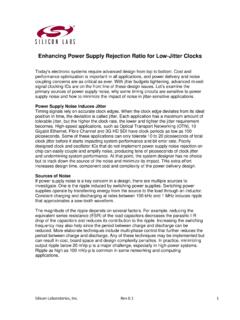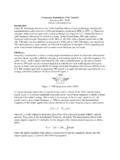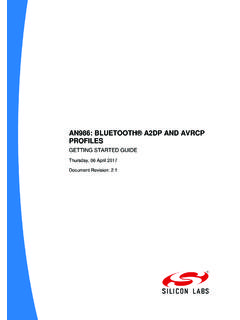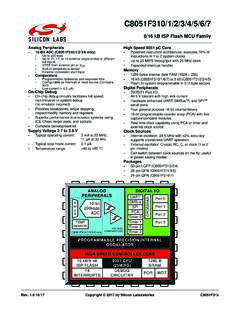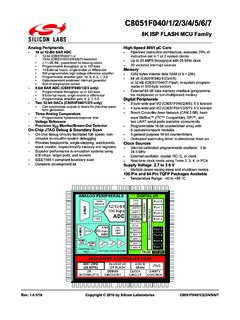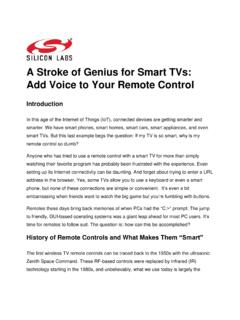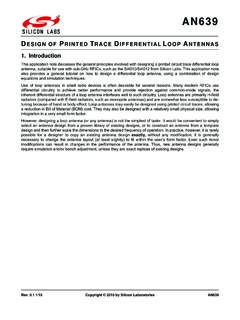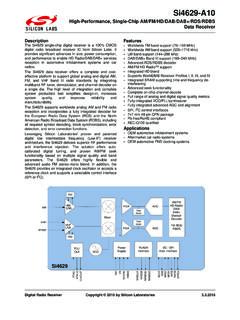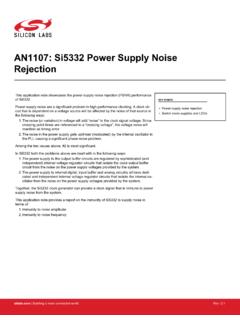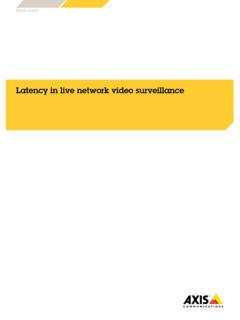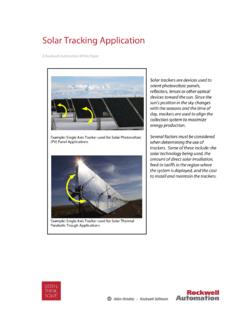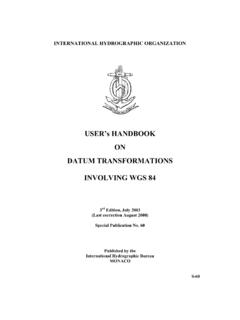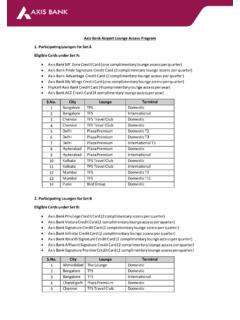Transcription of AN1275: Impedance Matching Network Architectures
1 AN1275: Impedance Matching NetworkArchitecturesThis application note introduces the important concept of impe-dance Matching between source and load in RF circuit applica-tions with the aid of VSWR, reflection coefficient, and Smith chartconcepts. Various types of Impedance Matching Network architec-tures (2, 3, 4, or more element) are discussed in detail, and math-ematical approaches to Matching Network design, supported bytwo solved numerical examples, are the design example in this application note discusses the Matching procedurefor EFR32 Series 1 GHz devices, the theory and steps for designing a Matching net-work are valid for any type of RF source and refer to"AN923: EFR32 Sub-GHz Matching Guide", " : EFR32 Series GHz Matching Guide", and ".
2 EFR32 Series 2 GHz Matching Guide" forthe exact Matching component values for the respective FEATURES Voltage Standing Wave Ratio (VSWR),Reflection Coefficient Complex Conjugate Impedance MatchingNetwork Introduction to Smith Chart 2 element L Networks 3 element Pi and T Networks 4 element Wideband Networks Design of Matching Network Numericaland AWR simulation | Building a more connected Table of Contents1. Reflection Coefficient, VSWR, and Impedance Voltage Standing Wave Ratio (VSWR).. Reflection Coefficient ( ).
3 Impedance The Smith Two-Element Matching Network The L Design Three-Element Matching Network The Pi The T Four or More Element Matching Network Wideband Matching Constant Q Lines: Two-Element vs. Four-Element Matching Numerical Problem Statement Low-Pass High-Pass Problem Statement For L Network For L Network Simulation Antenna Matching | Building a more connected | 21. IntroductionA simple RF application circuit consists of a Generator/Source ( RFIC) that generates an RF signal and consists of a load ( , anantenna that radiates the generated RF signal).
4 For any efficient RF circuit, it is necessary to maximize the power transfer between thesource and the load by minimizing the losses and internal reflections. In DC circuits, maximum power will be transferred between thesource to its load if the load resistance equals to source the case of time-varying signals, the Impedance of the source and load acts little differently when it comes to transferring signals. Tounderstand this difference lets analyze two conditions:[A] When Both Source and Load Impedances are Purely RealAs the Impedance is a real number, there is no imaginary component to it.
5 Hence, Voltage and Current waveforms are in-phase witheach other and thus both voltage and current signals reach from source to the load at the same Voltage and Current Waveform for Real Impedance [B] When Either Source or Load is ComplexAs the Impedance is a complex number, it will consist of both real and imaginary components. The real component can be classified asthe resistance while the imaginary component can be classified as the reactance. The reactance in the circuit adds delay in the currentwaveform and thus the delay in the signal being delivered to the load.
6 This delay causes the current waveform to lag the voltage wave-form making them out of phase. Due to this, reflections between the source and the load are generated. These reflected signals areadded to the incident signal resulting in standing waves which is given by the parameter Voltage and Current Waveform for Complex ImpedanceAN1275: Impedance Matching Network | Building a more connected | 32. Reflection Coefficient, VSWR, and Impedance Voltage Standing Wave Ratio (VSWR)Voltage Standing Wave Ratio (VSWR) is the ratio of the peak amplitude of a standing wave to the minimum amplitude of the standingwave.
7 A minimum value of VSWR is desired for maximum power transfer between the source and the + | |1 - | | Reflection Coefficient ( )The amount of energy that is reflected to the source defines the strength of the Impedance mismatch between the source and the reflection coefficient ( gamma) provides power that is reflected from the load due to Impedance mismatch in the Network . If thereis a serious Impedance mismatch between the source and the load, then almost all of the energy can be reflected to the source whichcan damage the following table defines the relation between return loss and mismatch Return Loss vs.
8 Mismatch LossS11dB = 10S1120 Mismatch Loss dB= - 10 Log10(1 - 2)Mismatch Loss ( % ) = (1 - 2) 100 the above table, if the S11 value is 3 dB, only 50% of the power is delivered to the load, and the remaining 50% (3 dB) of thepower is lost. Whereas if the S11 value changes to 10 dB, 90% of the power is delivered to the load and only dB power is lost. Itcan also be seen that if the S11 value is reduced further; the mismatch loss improves by little. Generally, an S11 value of 10 dB to 15dB is recommended because improving the S11 value further than 10 dB will only improve the mismatch loss by a minimal value ,the mismatch loss will be dB or dB when the S11 value is 15 dB or 20 dB : Impedance Matching Network ArchitecturesReflection Coefficient, VSWR, and Impedance | Building a more connected | 4 Figure Mismatch Loss (dB) =ZL-ZOZL+ZOWhere.
9 ZL = Load ImpedanceZO = Characteristic ImpedanceFrom the above equations, it can be seen that when ZL = ZO (Load Impedance is matched to the characteristic Impedance ), the reflec-tion coefficient ( ) = 0, making VSWR = 1. Thus, the minimum value of VSWR that can be achieved is : Impedance Matching Network ArchitecturesReflection Coefficient, VSWR, and Impedance | Building a more connected | Impedance MatchingFor the time-varying signals, the maximum power transfer occurs when the load Impedance is equal to the complex conjugate of thesource Impedance .
10 The term complex conjugate is simply having the Impedance with the equal real part but with an opposite polarity ofthe Impedance Transformation by Adding a Complex Conjugate Matching ComponentFrom the above figure, we can see that the complex source Impedance (RSource + jXSource) can be matched with the load Impedance (RLoad + j0) by introducing a Matching component ( jXMatch) in the circuit that has equal and opposite reactance from the source. Byintroducing this component, the opposite reactance gets canceled thereby Matching source and the load (assuming RSource = RLoad).
